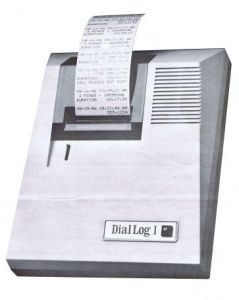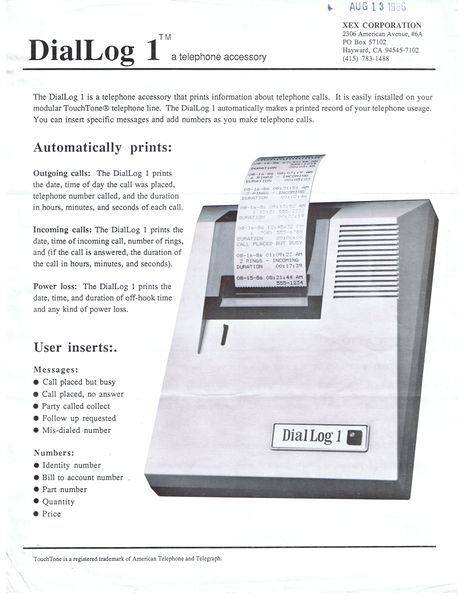Dial Log
and should NOT be used for any reason other than reading enjoyment |
Prior to moving to Redwood City, Kelly and I lived in Sunnyvale at Kaluah Kennels. I was also working at the Byte Shop on El Camino Real in Mountain View. That store was one of the very first to sell Personal Computers to the general public. It provided products and services for companies like Processor Technology, Altair, Creomemco, Mullen Computers, and several others that utilized the S-100 bus. Many of the products we sold were "kits". Customers would buy the kits from the store which I would take home at night, put them together and return to the store with them in the morning.
When the clubhouse opened in Redwood City, I thought I would like to know the efficiency of our incoming call to session's ratio. I bought several "while you were out" pads and placed them at the front desk. The idea was that whoever answered the phone, would fill out one of the forms so we could determine when the call came in, was an appointment made, and did the client actually show up. As usual, the burden of paperwork soon overwhelmed the task at hand. Oh, the beauty of bureaucracy.
I assigned one of my Cromemco computers with a modem card the task of listening to the session line. I programmed the computer to generate a log of all inbound calls telling me when the call came in and when the call ended. This also allowed for the collection of data day and night, 24/7/365 without human intervention.
After a while, I thought I would breadboard a prototype of a single board, Z80 based, process controller with a TelTone based DTMF (dual-tone, multi-frequency tones) decoder. With the Teltone chipset, I was also able to monitor the buttons on the telephone on my end of the phone line. This allowed me to use my phone as an input device to add additional information into the phone log. It was possible to log who the client was asking for and was an appointment made. Oh the beauty of technology!
When we moved to San Pablo Ave. in Berkeley, Bob Mullen and I thought my prototype would be a marketable product. We could manufacture and sell our device for a few hundred dollars while the closest product on the market was going for nearly $2000. So we begged, borrowed and made promises to all of our neighbors, friends and relatives. I packed up what I needed and I moved to Carson City Nevada and formed XEX Corporation.
- Dial Log Call Detail Recorder
I sold the sessions business to "Uncle" Duke Skinner. He owned several adult businesses along Broadway in San Francisco so I thought it would be a good match.
BackDrop was not part of the sale package, it simply went dormant while I was living in Nevada. I will discuss that story at another time.
Side notes
- Several computer science guys from Stanford both an optical recognition system called the Dazzler. it was based on the Altair (S-100) computer buss and it broke new ground for personal computers. They could not agree on what to name the company so that everyone had their initials in the company name. They decided to name it after their residency hall, Carruthers Memorial Hall became Cromemco. the Dazzler put a large load on the 8080 CPU of the Altair computer. Cromemco designed and marketed the Z-1 computer based on Z-80 processor with a much higher clock speed and 80 additional instructions.
What links here • References and Sources • Help • Contact info • Category:Root ⤴

